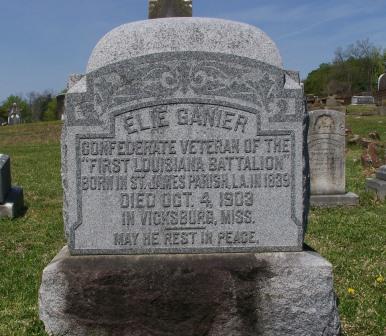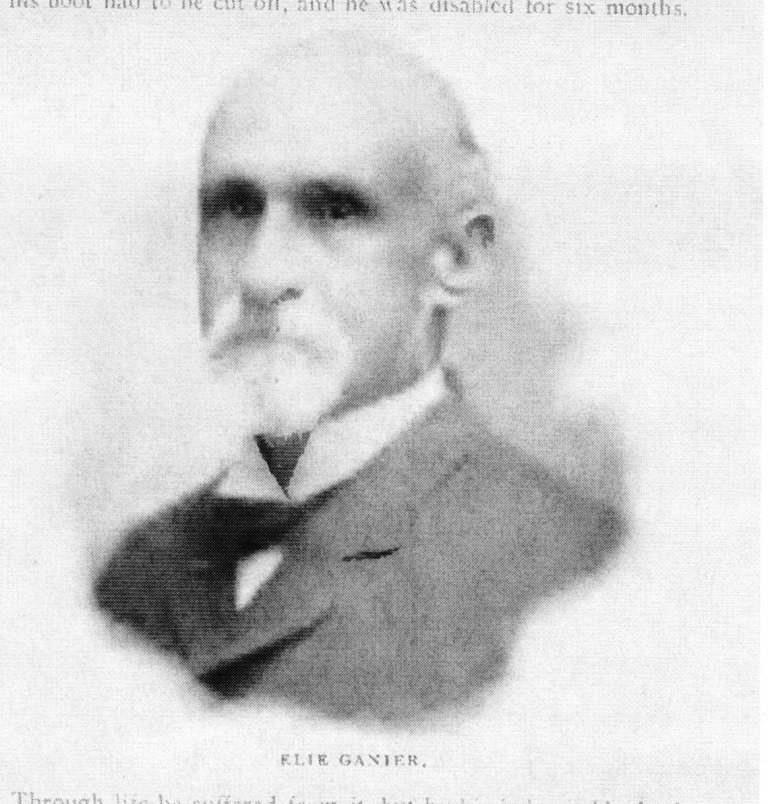|
CSA Veterans Interred at Cedar Hill
Cemetery |
|
|
Home
CSA Veteran Burials at Cedar Hill
Known CSA Soldiers at Soldiers' Rest
|
|
|
Elie Ganier
(Obituary further below.) |
Elie Ganier was born 1838 in St. James Parish, La. He died 4 Oct 1903
in Vicksburg.
Elie Ganier from the Confederate Veteran, Vol. 11 (1903), pg. 515. Ganier was 23 years old when he enrolled 23 April 1861 for one year at Halls Landing, Ala. He was discharged 11 Apr 1862 at Williamsburg and enlisted 29 Jun 1862 at Tupelo with 18th La. Inf., Co. E.
See his record at fold3.com/image/67611701/ and fold3.com/image/77071342/
|
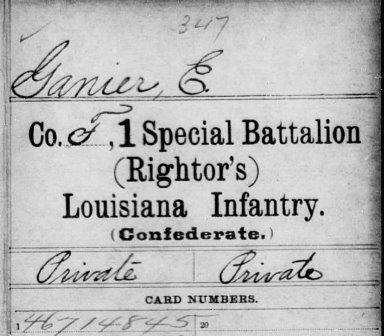 Elie Ganier enrolled in 1 Special Battn (Rightor's) La. Inf., Co. F, on 13 Apr 1861 at Halls Landing, Ala. His age is recorded as 23. Though not shown here, he signed up for 12 months. |
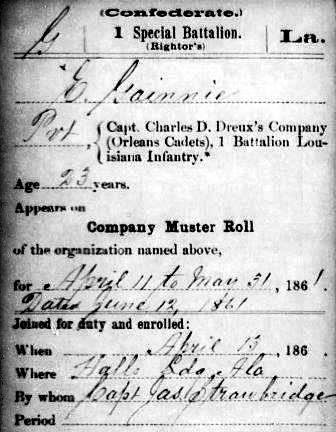 |
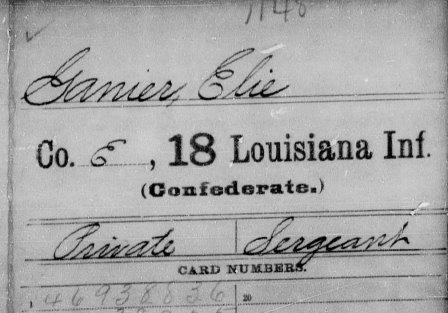 On 29 Jun 1862, he enlisted at Tupelo, Miss., for a period of 12 months in the 18th Louisiana Inf., Co. E. |
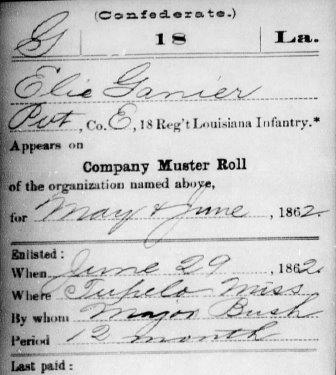 |
|
Obituary The following is an article from Confederate Veteran, Vol. 11 (1903), pg. 515. Elie Ganier, Member of Camp No. 32 On October 4, 1903, the soul of the brave Elie Ganier passed away. He was born in St. James Parish, La., in 1839. His father, Francois Ganier, was a native of France, who came to Louisiana in 1820 and engaged in merchandising, afterwards in sugar planting. He married Mademoiselle Heloise Le Bouef, a daughter of one of the older settlers in Louisiana. They reared a family of seven children -- namely, Joseph, Prosper, Jules, Francois, Marie Louise, Eloide, and Eli Ganier -- all of whom were educated in France. His daughters married and remained there, in the city of Nantes. His sons returned to the United States. Elie engaged in the business of a wine merchant for a time, but soon closed the business to enter the service of the Confederacy. He and his brother Francois joined the St. James Chasseurs, and went to Virginia among the first volunteers. Francois was the first lieutenant and Elie a noncommissioned officer They were assigned to the Trans-Mississippi Department, under Kirby Smith. Both were wounded at the battle of Mansfield, Elie Ganier being shot in the knee. He was carried off the field and placed on a rude bench in a vacant church among many wounded, where he lay unattended for thirty-six hours. His leg was so swollen that his boot had to be cut off, and he was disabled for six months. Through life he suffered from it, but by his indomitable fortitude he concealed the fact from the public. After the surrender of Gen. Lee, he purchased a cotton plantation in Madison Parish, where he spent thirty years in the cultivation of cotton. [See note below.] As a citizen he was highly esteemed for his public spirit, his interest in the levees, where he first introduced the banquette or protection levee, which is now universally accepted as the best method of strengthening levees. As a social companion he was beloved for his generous hospitality, his refined humor, his modesty, and his incorruptible purity and honesty. Comrade Ganier was married in 1877 to Miss Amanda Davis Mitchell, a daughter of Dr. Charles Jouett Mitchell and a niece of President Jefferson Davis. Both Mr. and Mrs. Ganier were accomplished musicians, who charmed and delighted their friends by their performance on piano and violin. He leaves three sons -- Elie, Mitchell, and Albert -- all young men of promise and devoted to their widowed mother.
NOTE: After the war, many Northerners moved to the South and purchased plantations or farmland. One particular book, Yazoo, by A(lbert) T. Morgan, published in 1884 tells the experiences of its author. He describes his relationships with the whites (secessionists and abolitionists), former Confederate soldiers, the freed men, and the former slaves (for and against this former Union soldier) of Yazoo County and Vicsburg. Morgan later was sheriff and tax-collector of Yazoo County, Miss. This book was found on forgottenbooks.com.
|
|
|
Use back button to return.
|
|
|
|
|
